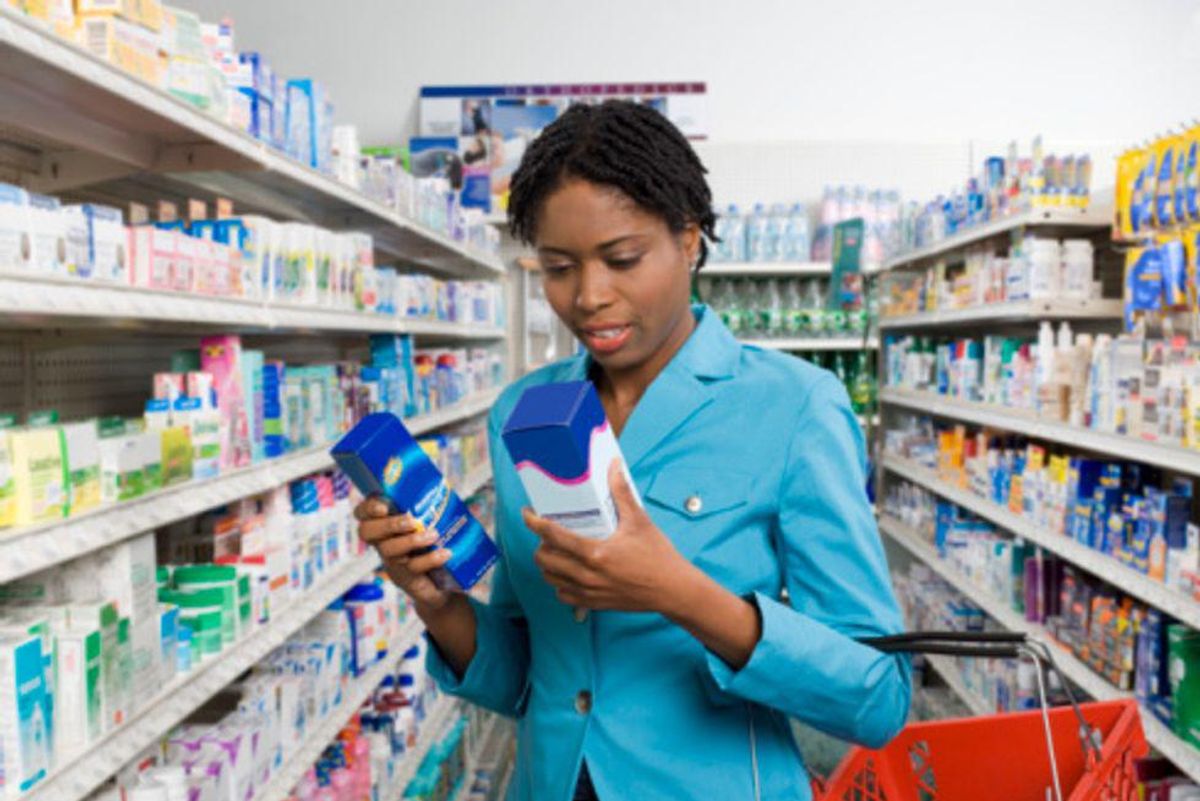This article has been archived. We will no longer be updating it. For our most up-to-date information, please visit our medication safety information here.
Just because a medication is available over the counter doesn't mean it is safe under every circumstance or for every person. And how do you choose the best cough syrup or allergy medicine when faced with so many boxes and bottles? Talk to your pharmacist—whether you're buying prescription or nonprescription medications, herbal agents or supplements. Your pharmacist can tell you when and how to take the medication and whether it should alleviate the symptoms you are trying to treat.
The pharmacist also can look up your prescription drug record to make sure the over-the-counter (OTC) product won't have adverse interactions with any of the other medications you take. For example, many decongestants can raise blood pressure and be dangerous for those who already have high blood pressure. Try to use one pharmacy for all of your prescriptions so there is a complete drug record in one place.
In the case of nonprescription medications, be sure to read the label and informational insert carefully to note any warnings or possible side effects, especially if you have a health condition such as diabetes, thyroid disease, high blood pressure or heart disease.
If the condition for which you are taking OTCs doesn't get better after several days, contact your health care professional.
It's also not wise to take an OTC for a condition you are experiencing for the first time. In such a case you may be guessing at what you have. For example, you should talk with or see a health care professional the first time you get a yeast infection, rather than trying to treat it yourself, to make sure your symptoms truly are associated with a yeast infection and not another condition.
Read the label every time you take the medication to prevent mistakes. This is especially crucial if you take more than one drug. You may find that some OTCs have different directions from the last time you purchased them. The U.S. Food and Drug Administration recently revised and standardized its requirements for what must be on a nonprescription label. (The new Drug Facts labeling requirements do not apply to dietary supplements, which are regulated as food products, and are labeled with a Supplement Facts panel.) Here is what appears on an OTC label:
- Active ingredient: The type and amount per unit of the active therapeutic substance in the product.
- Uses: What the product will treat or prevent.
- Warnings: When to avoid using the product; when to see advice from a doctor before using the product; potential interactions or side effects; and when to stop taking the product or to contact a health care professional. It also advises you to talk to your health care professional if you are pregnant or breastfeeding and to keep the product out of children's reach.
- Inactive ingredients: Substances such as colors, flavors or preservatives.
- Purpose: What the product is designed to do, such as antacid or cough suppressant.
- Directions: Instructions on how much to take, how to take it, and how often and how long to take, as well as what ages should take it.
- The expiration date: The date after which you should not use the product (if applicable).
- Lot or batch code: Manufacturer information.
- Name and address of manufacturer, packer or distributor
- Net quantity of contents: How much is in each package.
- What to do if an overdose occurs
- Other information: Storage instructions and required information about certain ingredients (such as the amount of calcium, potassium or sodium)
Here are some safety tips from the FDA for nonprescription medicines:
- Inspect the packaging. Many OTC medicines use tamper-evident packaging to help protect you against possible criminal tampering. Drug products with tamper-evident packaging will have a statement describing the packaging. Always inspect the outer packaging before you buy a nonprescription drug and look at it again before you take it.
- Store medicines safely. If the medicine has child safety caps, use them properly. And keep all medicines out of the sight and reach of children.
- Read all information. The label tells you what a medicine is supposed to do, who should take it and how to take it, but this information won't help unless you read it. Manufacturers sometimes make changes to their products or labeling, such as new ingredients, dosages or warnings, so make sure you read the label each time you use the product. Look for any special "flags" or "banners" on the front product label alerting you to changes.
- Ask questions. If you read the label and still have questions, ask your doctor, pharmacist, or other health care professional.
For more on medication safety, visit Facts to Know About Medication Safety.







